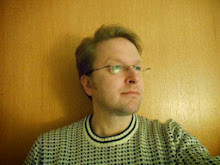
Edelliseen päivään verrattuna kaakossa kehittynyt uusi matapaine siirtyi kuvauspäivänä lähemmäksi Suomen eteläpuolelle. Matalapaine oli osa pitkälle Atlantille ulottuvaa pienten matalapaineiden sarjaa, joka kehittyi edellisten päivien aikana. Sen myötä etenkin Länsi-Eurooppa (paitsi Espanja) pysyi viileänä, mutta ensin mainittu matalapaine kierrätti Suomeen edelleen ajankohtaan nähden melko lämmintä ilmaa idästä ja kaakosta (kuumat ilmamassat olivat yhä Kaspianmeren pohjoispuolella); ko. päivän ylin lämpötila oli +24,0 astetta. Matalapaineeseen liittyi okluusiorintama, joka saapui kuvauspäivänä eteläisen Suomen ylle. Siihen liittyi runsasta pilvisyyttä, josta kuvassa olivat esimerkkinä verhopilvet ja tummemmat kumpukerrospilvet. Sateet pysyivät kuitenkin lähellä matalan keskusta melkein kokonaan Suomen eteläpuolella. Niinpä kuvan ottamiseen mennessä ei satanut yhtään ko. paikalla. Tässä kuvassa nähdään selvemmin, kuinka tuo nurmikko oli alkanut elpyä viime päivien sateiden ansiosta. Kuvan lehtipuut olivat edelleen kesäisen vihreitä, mutta tuore kosteus ei vaikuttanut vielä kunnolla puiden kuivuuden aiheuttamiin vaivoihin. Lehtien kellastumista tapahtui siten vielä joillakin ns. puolikuivilla paikoilla (kuivimmilla paikoilla moni puu oli jo valetalvilevossa tai kuollut, kuten edellisessä merkinnässä käy ilmi), missä kellastuminen oli tässä vaiheessa jo tavallaan syysvärejä. Varsinainen ruska oli siis alkanut etuajassa yksittäisillä paikoilla. Kasvukauden lämpösumma saavutti tässä vaiheessa tällä alueella sen arvon (n. 1300), joka normaalisti saavutetaan kasvukauden päätteeksi lokakuussa. Sen mukaan kasvukausi oli nyt edellä normaalista aikataulusta jopa yli kuukauden. Kasvun kehitysastetta arvioimalla kasvun etumatka oli kuitenkin keskimäärin vähän alle kuukauden. Kuivuuden takia paikalliset vaihtelut olivat kuitenkin edelleen äärimmäisiä (etenkin etelärannikolla), koska kuivilla kasvupaikoilla kasvit olivat olleet osaksi lepotilassa jo pari - kolme viikkoa. Normaalistikin kasvun astetta on vaikea määritellä tarkasti kasvukauden lopussa, kun kasvillisuus näyttää kasvunsa lopussa pitkän aikaa melko samannäköiseltä ennen syysvärejä. Nyt tuo aikajakso oli poikkeuksellisen pitkä kotimaisten kasvien parissa lämmön takia. Kosteilla alueilla huikea lämpökertymä näkyi parhaiten tietyissä ulkomaisissa lämpöä vaativissa lajeissa (joilla on Suomen oloissa vielä myöhäisiä ja selviä kasvuvaiheita) joissakin puistoissa ja puutarhoissa; esim. jalopähkinöiden (Juglans sp.) tämän kesän isot versot olivat jo pääosin loppuun puutuneita ja mustaseljan (Sambucus nigra) marjat kypsyneitä. Lisääntynyt maan kosteus olisi näkynyt tässä vaiheessa myös öiden ja aamujen kasteen ja sumujen lisääntymisenä myös yhä pimenneiden öiden takia, mutta voimistuneet itätuulet estivät niiden esiintymisen ja ilmamassakin oli melko kuivaa; ei ollut kunnolla edes utua. Säätilanne: valitse 24.8.2006; Wetter3 A. Wetter3 B.
As compared to the previous day the low pressure formed in the southeast moved closer to the southern side of Finland during the photoshooting day. The low pressure was a part of a series of small low pressures reaching far Atlantic, which formed during previous days. Therefore especially western Europe (Spain not included) remained further cool, but the firstly mentioned low pressure circled further rather warm air considering the time of the year into Finland from the east and southeast (hot air masses were still in the northern side of Caspian Sea); the maximum temperature of the day was +24,0 C. There was associated an occluded front with the low pressure and it arrived over southern Finland during the photoshooting day from the southeast. There was related plentyfull cloudyness with it and there are altostratus and darker stratocumulus clouds in the picture as examples of that. However the precipitation remained near the low pressure center allmost completely in the southern side of Finland. Therefore there didn't come any rain until the photoshooting moment in this place. In this picture we see more clearly, how that lawn had been started to recover thanks to the rains in recent days. The broadleaf trees in the picture were further summery green, but the fresh moisture didn't have yet a proper effect to the trees troubles caused by the drought. Therefore leaves were yet turning yellow in so called half dry places (in the most dry places many trees were in a pseudo winter dormancy or dead, as it is revealed in the previous post), where the leaves turning yellow was at this stage in a way the first fall / autumn colours. So the period of true fall colours had been started ahead of schedule in single places. The temperature sum of the growing season reached at this stage in this region the value (about 1300), which is normally reached at the end of the growing season in October. According to that the growing season was now even more than a month ahead of the normal schedule. However when evaluating the stage of growth the advance of growth was a bit less than a month of the average. However due to the drought the local differences were further extreme (especially by the southern coast), because a part of the plants in the dry localitys had been in dormancy for two to three weeks allready. Also normally it is hard to evaluate sharply the stage of the growth at the end of the growing season, because the vegetation appear rather same looking for a long time at the end of the growth before fall colours. Now that period of time was unusually long among native plants due to the warmth. However in moist areas the enormous amount of growth appeared the best among certain foreign species requiring warmth (which have yet late and clear growing phases in the circumstances of Finland) in some parks and gardens; for example this summers big shoots of Walnuts (Juglans sp.) were allready completely turned woody for the most part and berries of Common Elderberry (Sambucus nigra) were ripened. The increased ground moisture would have been showed at this stage as increasing of dew and fogs during nights and mornings also due to the further darkened nights, but the strengthened easterly winds prevented them from appearing and the air mass was also rather dry; there wasn't properly even haze. Weather condition: choose 24.8.2006; Wetter3 A. Wetter3 B.
Helsingin Puistolan säätilasto elokuussa 2006 - Weather chart of Puistola, Helsinki in August 2006.
Flickr 1 Flickr 2
Tehoisa lämpösumma - The Effective Temperature Sum: 1303,3


0 Comments:
Post a Comment
<< Home